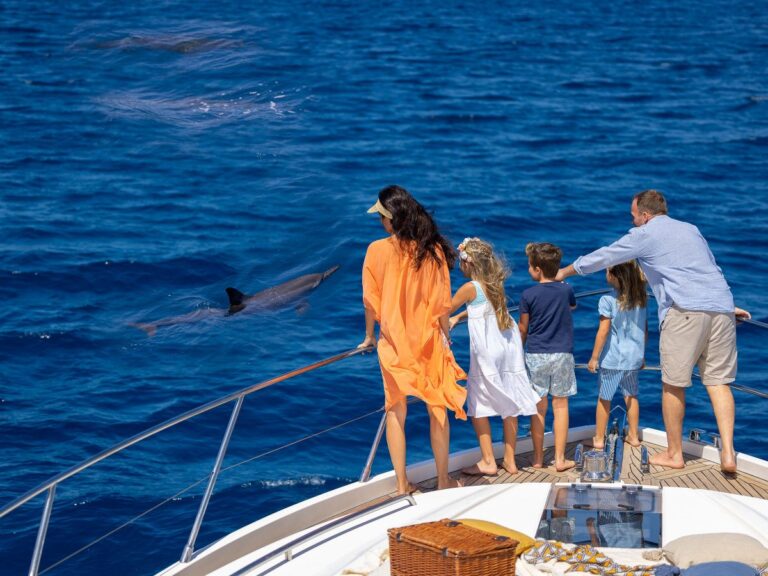The Maldives has welcomed a little over 540,000 tourists as of March 19, 2025 which itself is indicative of a 4.8% increase compared to the same period last year. While the Ministry of Tourism may have had been ecstatic in sharing this statistical update that shows a notable growth in tourist arrivals on an annual basis for the current year, there may also be significant other cogs in the larger mechanism that is the Maldivian tourism industry – which may have been experiencing unbeknownst hindrances over the past year.
The current government administration, that came to power in November 2023, had set its sight on a grander vision for the tourism industry. This was quickly addressed when the then Minister of Tourism, Ibrahim Faisal had revealed the state administration’s plans of attracting more than 2 million tourist arrivals before 2024 wrapped up.
The country indeed went on to achieve the government-set target before the year concluded. In fact, the Maldives had attracted the targeted 2 million travelers and then some.
A mighty, and first-of-its-kind feat for the island nation, that also celebrated its fifth consecutive “World’s Leading Destination” win at the World Travel Awards last year.
Statistics reveal a total of 62,587 tourist beds in operation – which is spread across the various tourism segments offered in the Maldives; which include tourist resorts, guesthouses, city hotels, and safari vessels among other tourism facilities.
So far in 2025, the Maldives Marketing and Public Relations Corporation (MMPRC/Visit Maldives) – the island nation’s state-backed tourism board – announced a landmark multi-year global partnership with Liverpool Football Club (LFC), the first of its kinds, which is set to enhance the Maldives’ international visibility and attract high-value travelers. Another key aim for this behemothic deal is to drive significant economic growth for the island nation’s tourism sector, said MMPRC. The official launch of this partnership is slated for April 2, 2025 during Liverpool FC’s match against Everton, with promotional content to be displayed at Anfield Stadium’s LED boards.
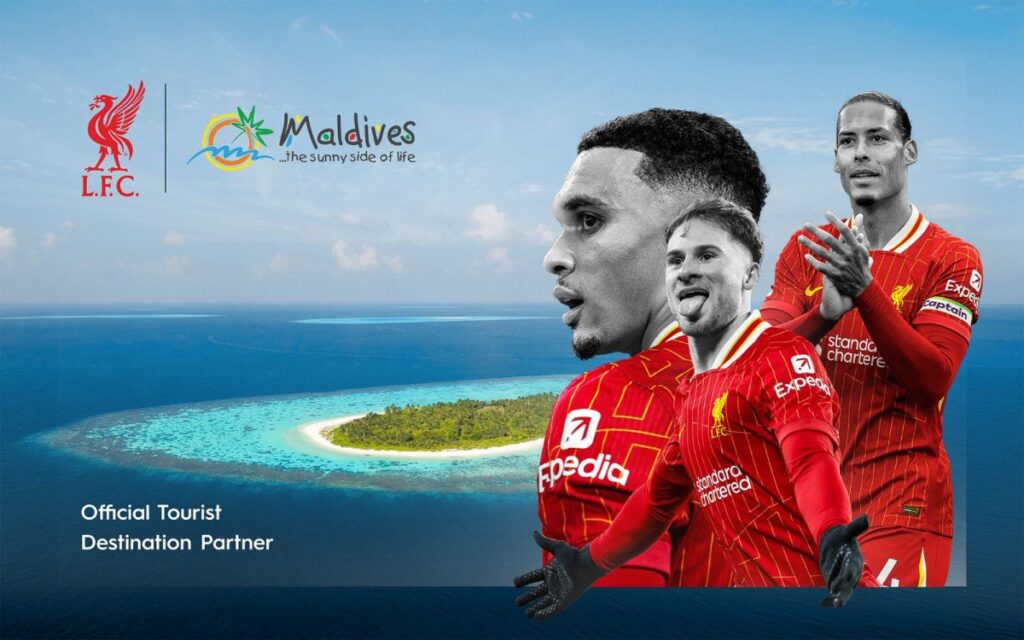
This collaboration is projected to attract over 100,000 additional tourists to the Maldives in 2025, which in turn would reportedly contribute an estimate of USD 100 million to the industry.
MMPRC’s strategic partnership with heavy-hitter sports brands did not end with LFC, as it was reported, not long after the gargantuan LFC-deal, that the Maldives tourism board has partnered up with Indian cricket giants, Mumbai Indians.
Maldives will be the Official Tourist Destination Partner for the most successful cricket team from India, for the upcoming 2025 season. This first-ever of its kind partnership for Visit Maldives in India, reinforces the Maldives’ commitment to strengthening its presence in one of its most important source markets, MMPRC added.
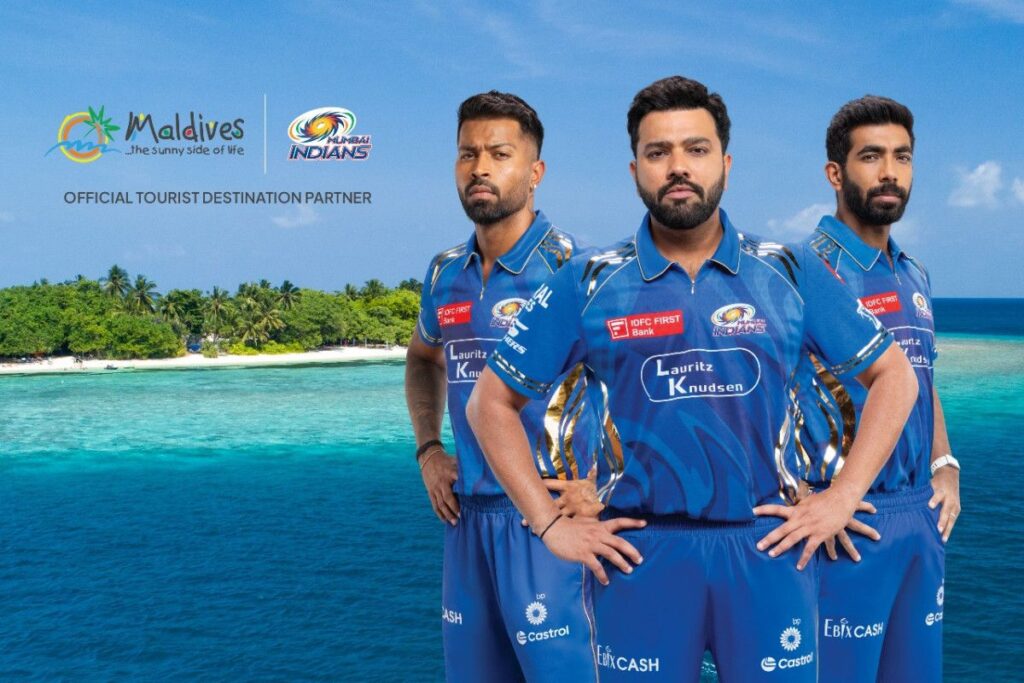
The Mumbai Indians partnership may also serve as an ideal band-aid to repair the damage that was done last year when three key government officials from the Maldives derided Indian Prime Minister Narendra Modi on social media, resulting in an intense backlash from the South Asian ally that metastasized into overblown boycott movements by the netizens and celebrities alike.
The source market, that maintained top position for three consecutive years from 2020 to 2022 had slipped to the bottom of the top-10 rankings earlier last year, but managed to climb up and maintain the sixth spot.

The damage had been of such significance that multiple attempts at mending the fences were made by Maldivian top-brass that had included President Dr. Mohamed Muizzu himself, so as to ensure that the most important and exponentially growing source market maintained its momentum to the Maldives.
This new multi-million-dollar deal appears to be the perfect solution for the Maldives to revitalize its waning popularity among Indian citizens; as cricket is often followed and adorned to ritualistic levels among the South Asian giant’s population.
While such top-tier deals may incredibly boost tourist arrivals to the Maldives; there are some strongly lingering questions at the back of this writer’s mind. The chief being; exactly how much money has been watered into realizing these deals and exactly how much of a “return-on-investment” is the Maldives looking at?
Is it feasible?
Since the inception of the MMPRC, it had operated with a set annual budget, within which it had finalize and incorporate all manners of tourism promotional activities for any given fiscal year. The tourism board had a limited range of activities it could successfully partake in per annum, so it mostly targeted on the global travel trade events that provided maximum exposure. Which explains why the island nation leaned towards titans like the ITB Berlin and the World Travel Market to name a few.
Over the years however, the operating budget of the tourism board saw gradual increment, which allowed it to expand the portfolio of events it took part in per year. This in turn resulted in expanded exposure and subsequent translation of this into increasing tourist arrivals – that kept on rising gradually year-on-year.
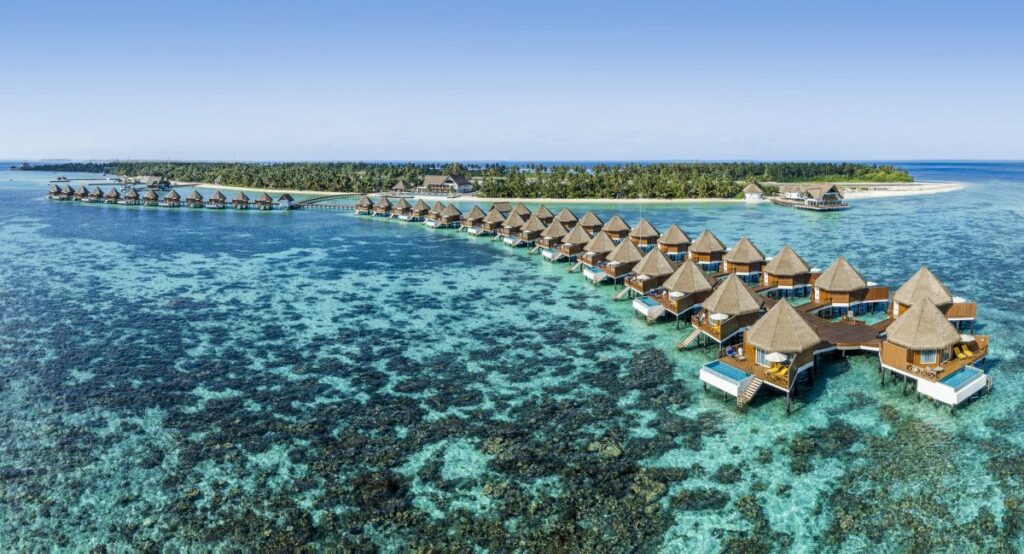
All good. However, the primary concern for this writer, is that there has been acute focus made towards the ‘one-island, one-resort’ concept across all of these tourism promotional efforts, that other segments of the island nation appear to be greatly sidelined.
Since the 2020 Covid-19 pandemic shook the core of the human civilization and brought forth with it a multitude of new trends, which has become etched into the ethos people, the travel trends and patterns have also seen a notable shift. There has been a growing demand and enthusiasm towards budget traveling options; and with it, the need for innovation.
While guesthouses in the Maldives have grown in number, currently sitting a little shy of 900 in quantity, they all feel like extensions of one another rather than offering something unique.
If there is anything that is constant with mankind, it is the constant need for change and evolution. We are a race that had evolved past the want for Blackberries with full stack of keys to full-screen touch sensitive iPhones and Samsungs. We are also a race that has moved past diesel-laden pebble cars to the exotics that grace the streets of today. Aviation, that used to be deemed a luxury, is now affordable for all.
So, with the emergence of new travel trends, it becomes apparent that the Maldives tourism industry, is in dire need of significant transformation to cater to these; if it wishes to avoid following the same footsteps of Nokia.
Then comes the question; is it really feasible, when it comes to the money put forward by the Maldives, in hopes of greater return?
There was a period of time where MMPRC had operated at an annual budget of MVR 50 million; but the powers that be soon realized that this amount was ‘chump change’ and would not do any serious ‘damage’ in terms of driving up tourist arrival numbers. The government acted efficiently in increasing the budgetary allocation to the tourism board, which had happened during the presidency of Ibrahim Mohamed Solih. Reportedly, the tourism board’s annual budget was pushed up to an estimate between MVR 100 million to MVR 150 million.
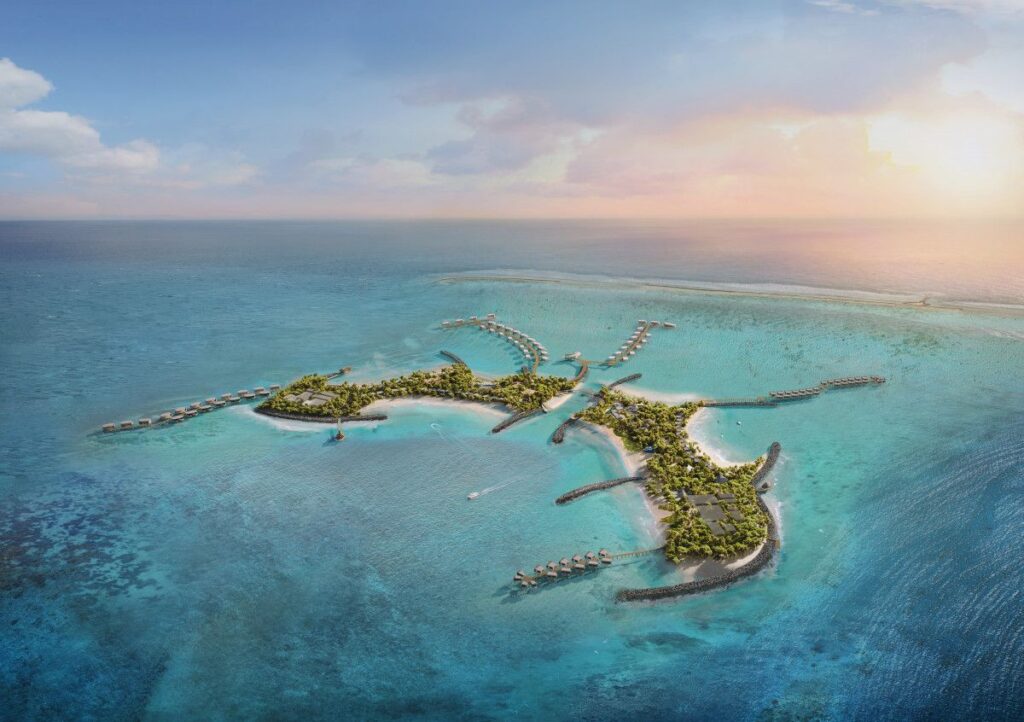
The budgetary increment had reflected in increased tourist arrivals; but owing to the lack of full transparency on the part of MMPRC, with regards to how the money it had spent was earned, it is unclear to state that the investment had in fact borne any profit.
So, to cut short the chase for an answer to the earlier question; it is not quantifiable as of now, whether the expense on tourism promotion has in fact been feasible. Though an argument could be had, that the increase in tourism receipts at an annual basis, is strongly indicative of the feasibility of MMPRC’s efforts.
The lack of exploration, is hindering the scope for growth
Back in 1972, when the Indian Ocean archipelago welcomed the very first batch of tourists – hippie backpackers from Italy – the country had not anticipated that come 50 plus years later, the industry would have transformed into a trillion-dollar one.
During the industry’s formative years, a greater and exclusive focus was made on expanding the portfolio of tourist resorts that offered high-end hospitality services to the guests. The status quo on this would remain without any change until 2010, when former President Mohamed Nasheed came up with a revolutionary change for the tourism industry, when the then government introduced a then-unfamiliar concept of ‘local tourism’.
This move had ushered in a new era for the tourism industry, which had observed an exponential growth in budget-friendly or mid to low tier tourist properties springing up across local islands that tourists could visit when they decide on holidaying in the Maldives. There were some catches; first and foremost being the lack of availability of liquor as Maldivian law prohibited the sale and consumption of alcohol across residential islands.
Initially, this was viewed as something that would play against the local tourism concept. Some industry experts had even speculated that local tourism was not here to stay.
However, despite the projections by industry auteurs, the local tourism segment proved to be a monumental success for the island nation; as more and more guests began flocking to the island nation to experience the ‘Sunny Side of Life’ while making sure their purses aren’t dented too heavily.
Besides guesthouses, other segments became more prevalent across the tourism industry; including safaris and liveaboards and city hotels, and more recently homestays. Though, there’s no denying that all of these segments combined is still unable to generate the same level of tourism receipts as the near 160 tourist resorts, it must also be noted that the budget friendly categories attract a greater number of tourists per annum; who also do not mind spending a few extra dollars here and there in boosting the earnings of local communities.

Despite all the positives, it was quite visible how the tourism board had always prioritized promoting tourist resorts and its offerings over the remaining segments. It is a common practice for MMPRC to bring a contingent of tourism industry partners along with it to various international travel trade events, and most of these events, the tourism board usually ropes in resort brands as well as tour operators and travel agents.
There is also an argument that many TOs and TAs operating in the Maldives favor tourist resorts over other segments as resorts are the only segment that provide commission for them. However, there is lack of any accurate data to make a statement backing this; therefore, this writer will not digress.
Bottom line
It could be safely argued that the tourism promotional efforts per every year, have been noticeably positive; mostly in terms of growing arrival numbers, which subsequently boost tourism-receipts. However, the more recent extravagances of the Maldivian tourism board could be viewed as ‘overkill’ which may not proportionately generate income from the tourism industry. An accurate statement on this matter remains elusive owing to the lack of necessary data.
However, it would a safer assumption to make that the country’s tourism board, has had been concentrating a significant portion of its budget and resources on boosting a single segment while the rest are comparatively sidelined and oft forgotten.
There is also the need for innovation as the Maldivian tourism industry, may not be able to milk the ‘one-island, one-resort’ concept for any longer as cheaper alternatives that mirror the tropical and idyllic setting of the Maldives are being offered in various other parts of the globe.
Perhaps, the various and influential actors of the island nation’s largest industry must come together to brainstorm on expanding the portfolio of products; as the lack of any innovation or the refusal to evolve could in fact, become the bane on tourism industry’s sustained existence in the long run.
To say anything in the absolute would be a crime for a writer who is simply putting forth an opinion, and as such, the topic at hand will see its due conclusion now.


